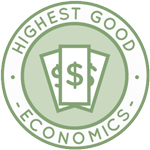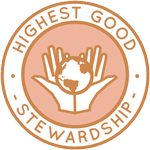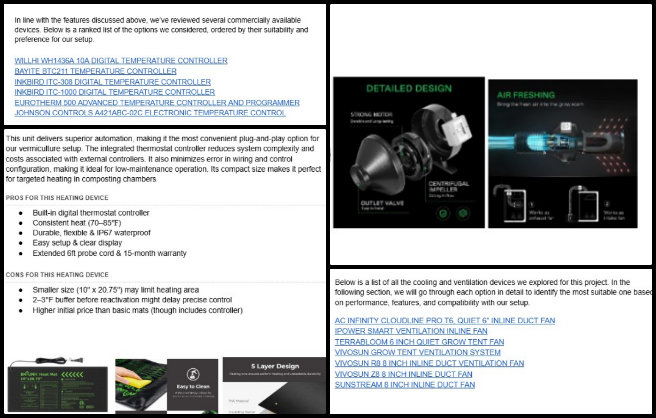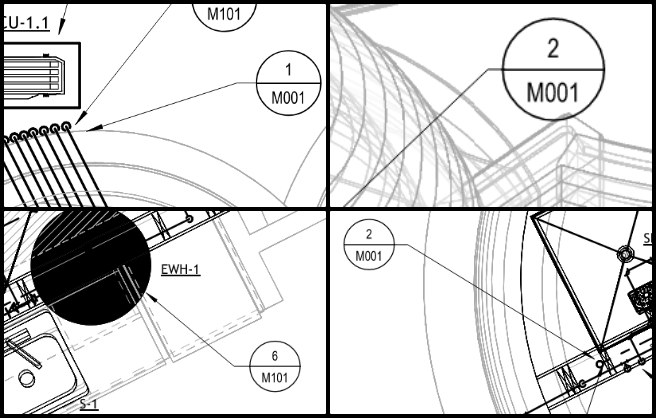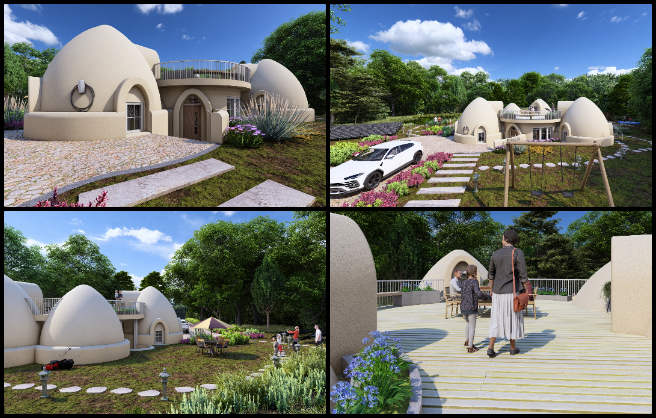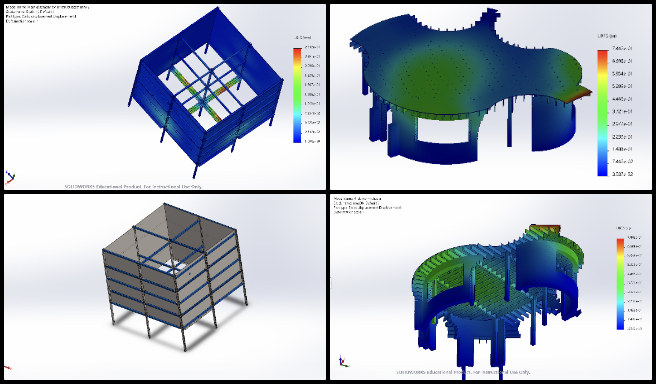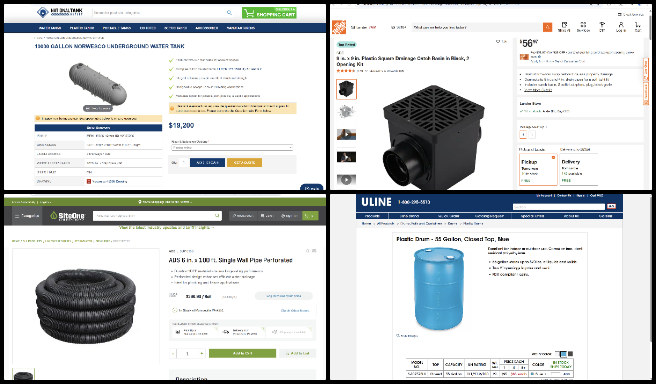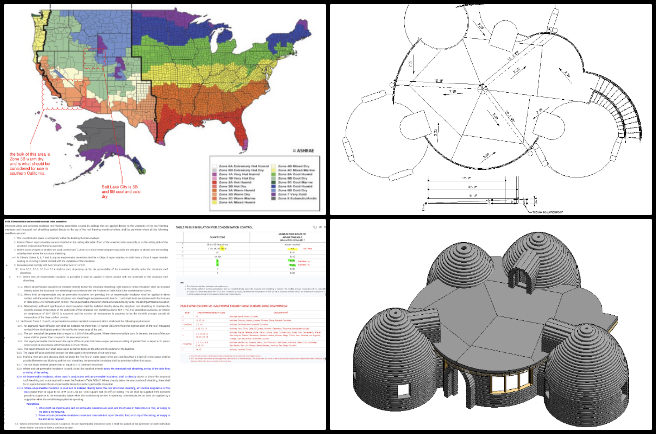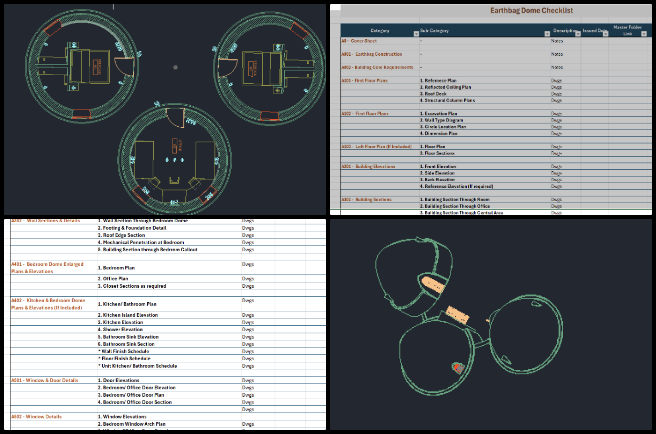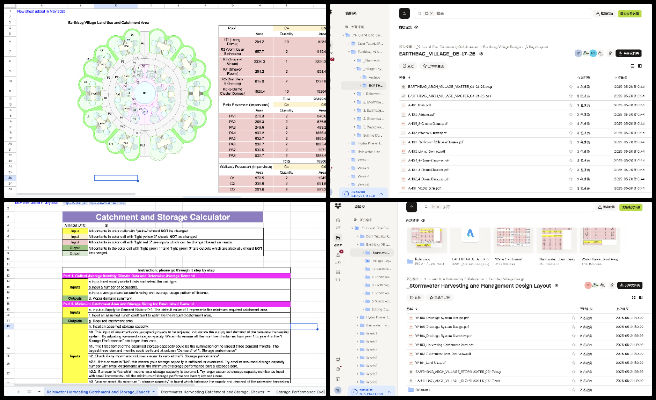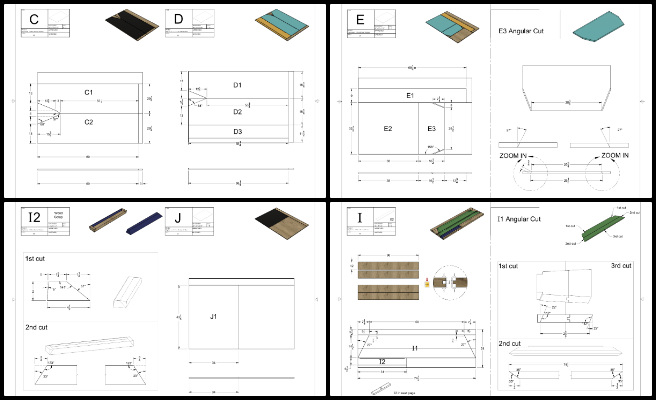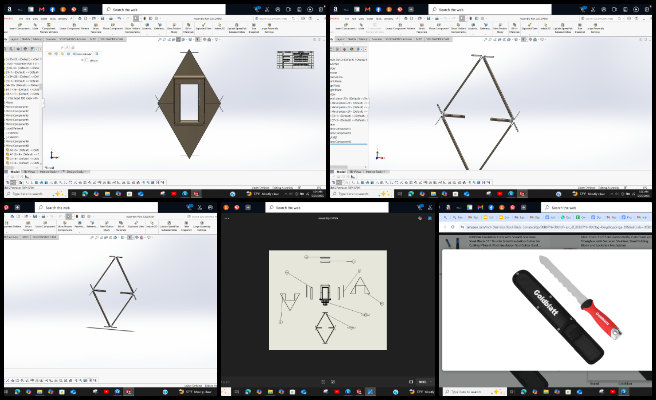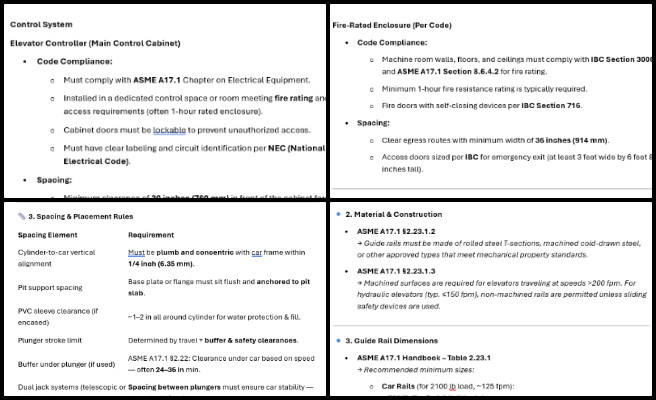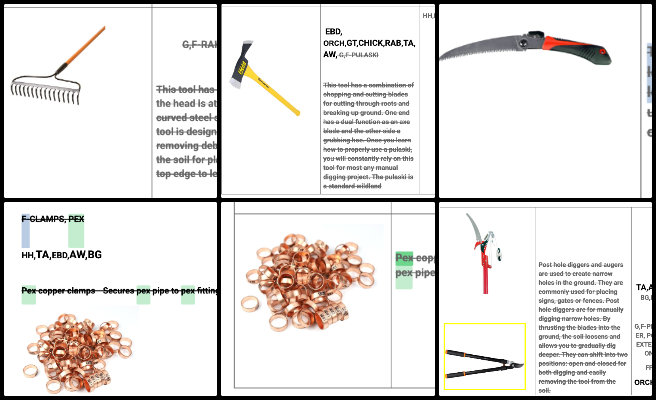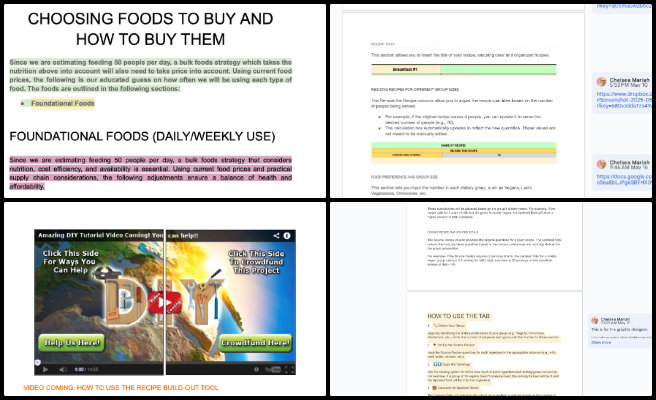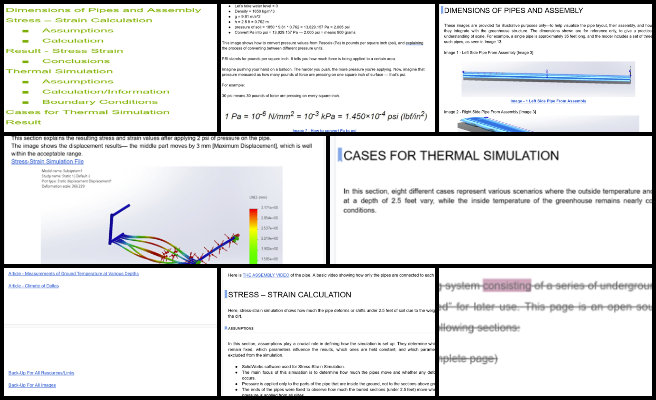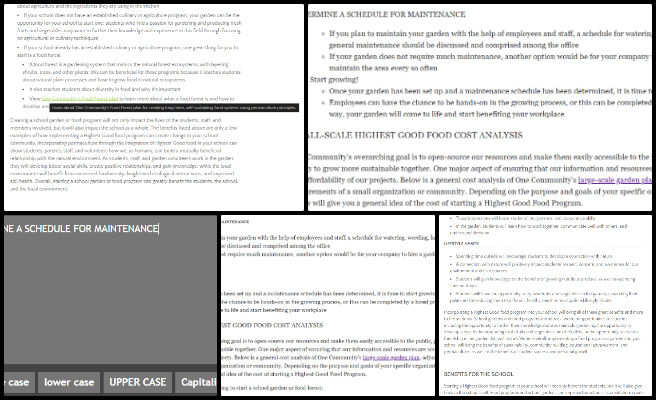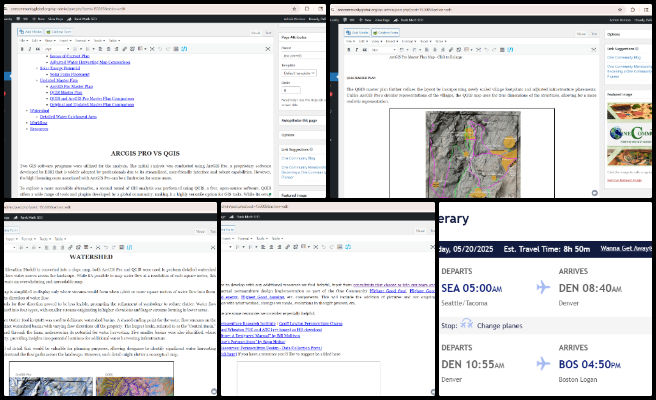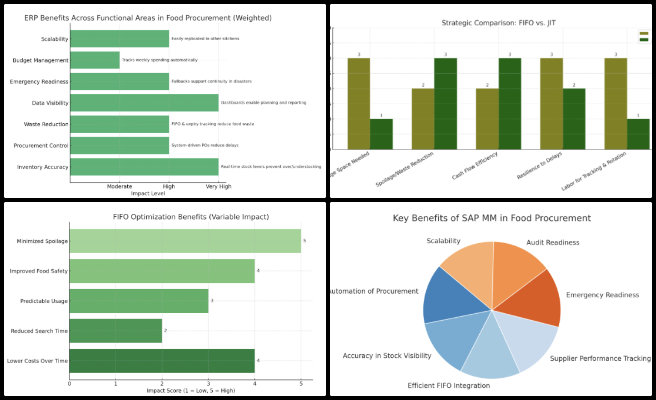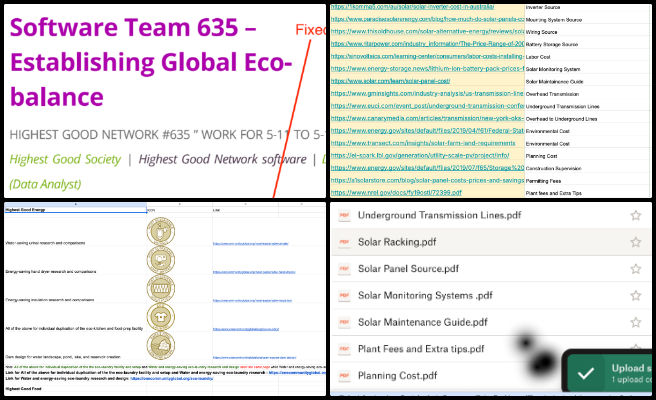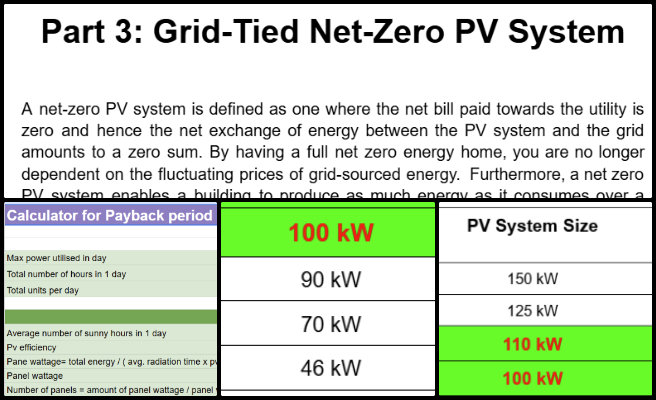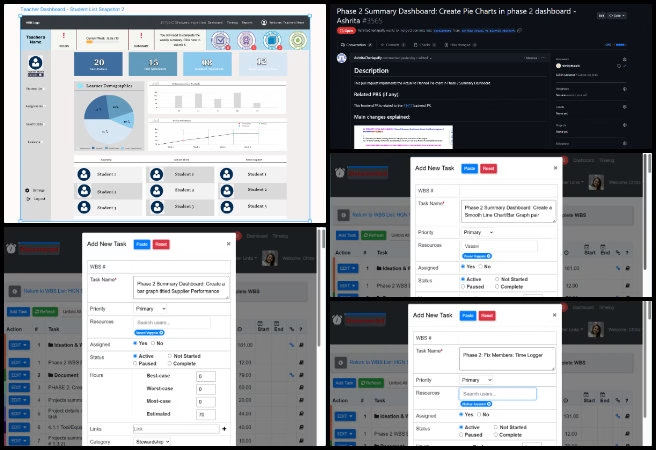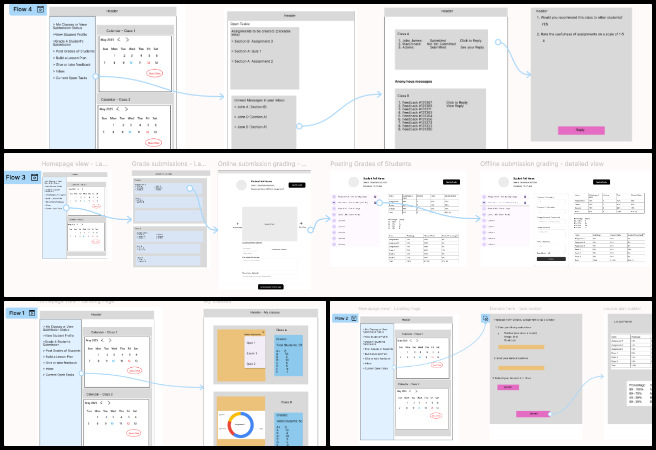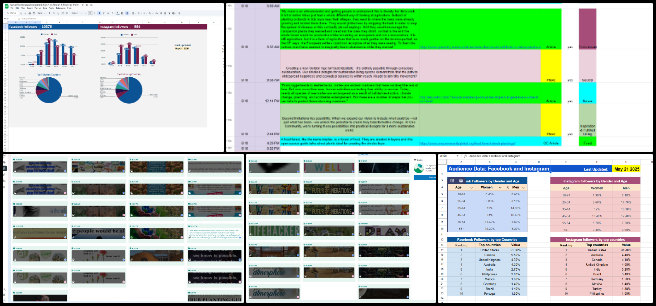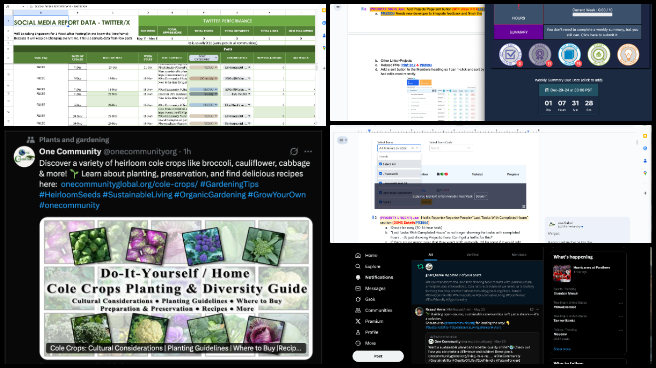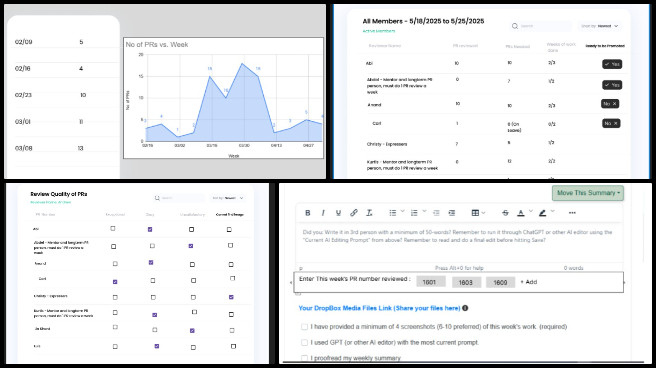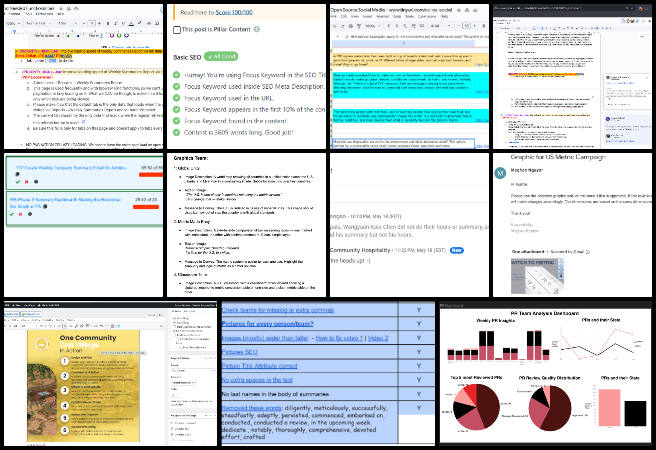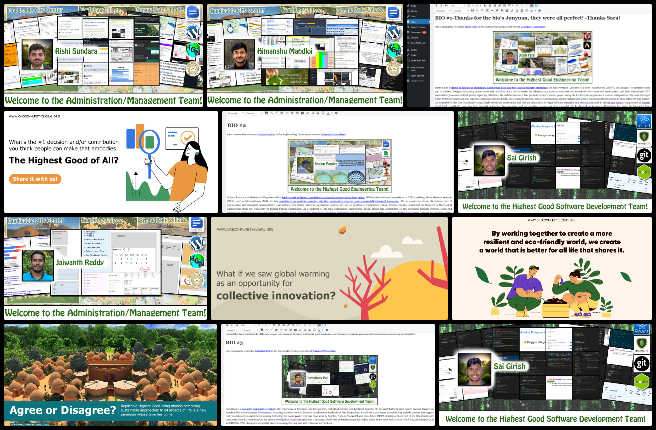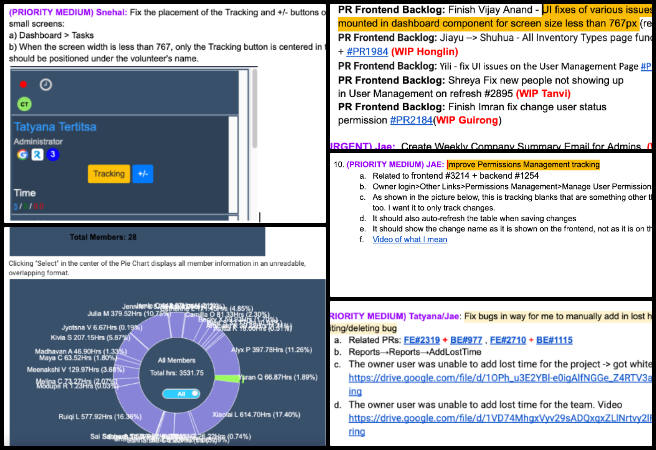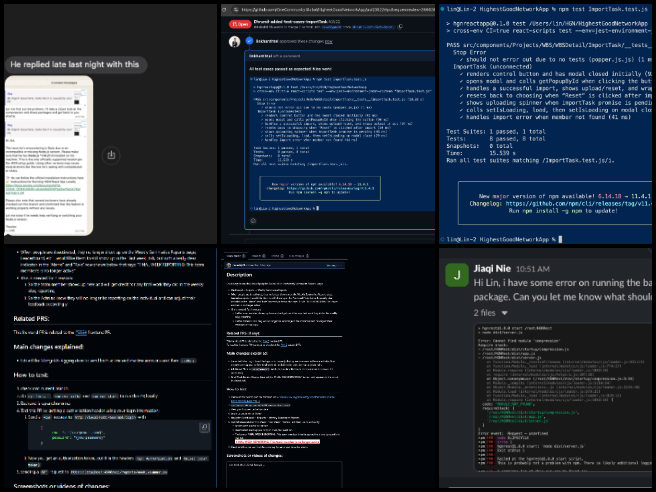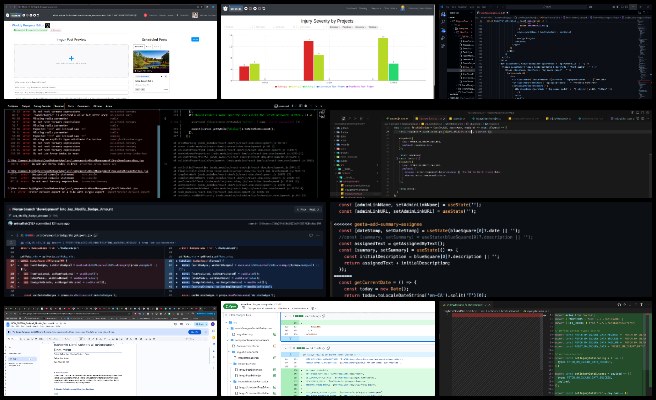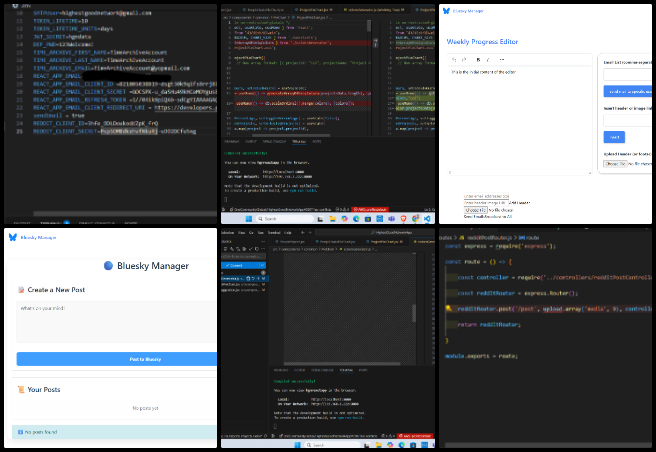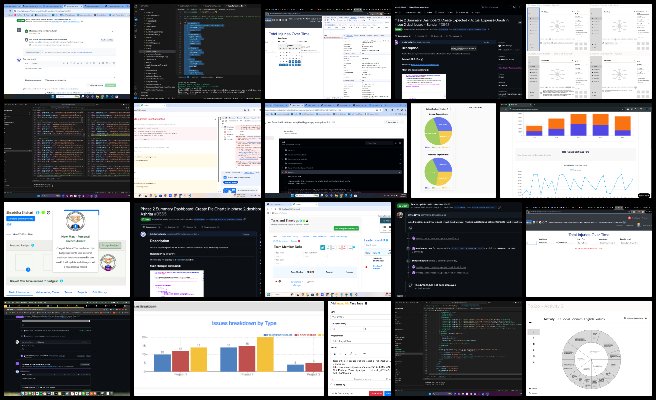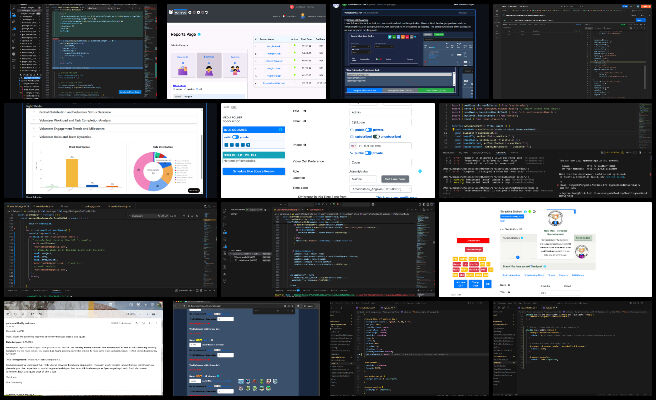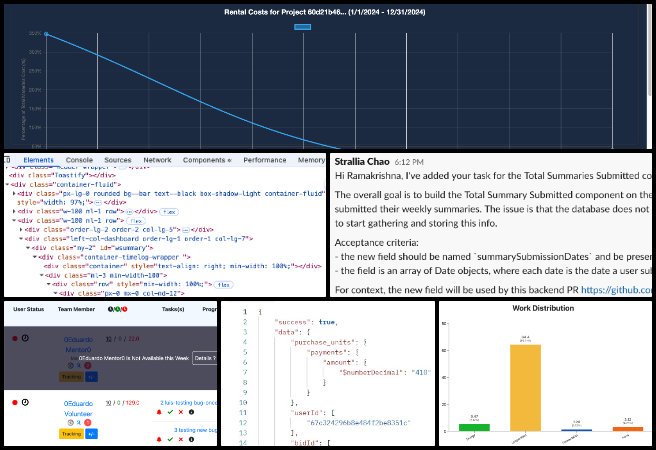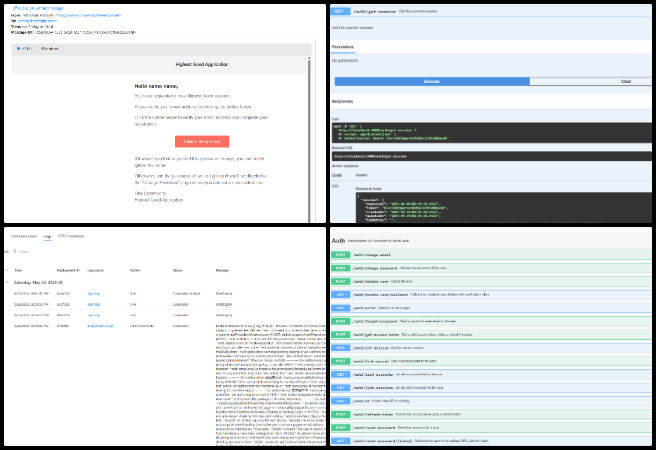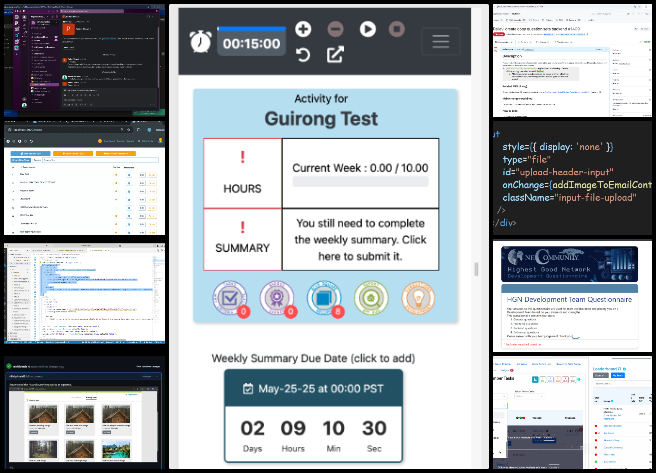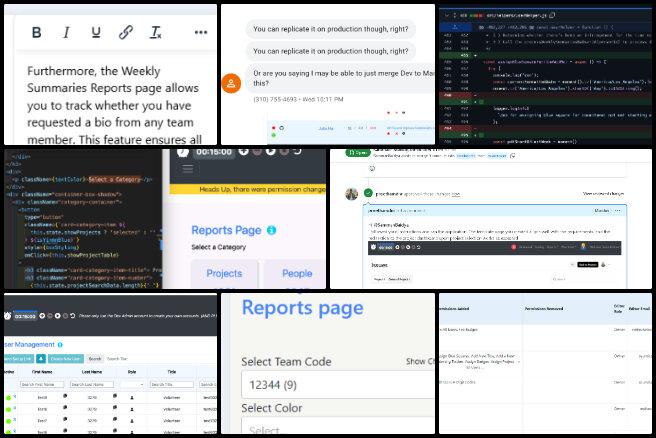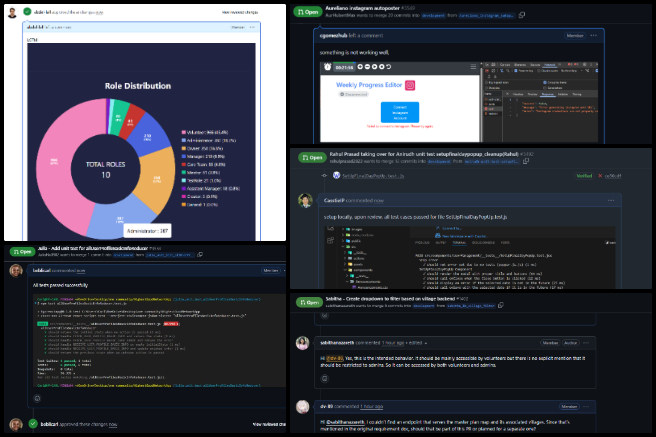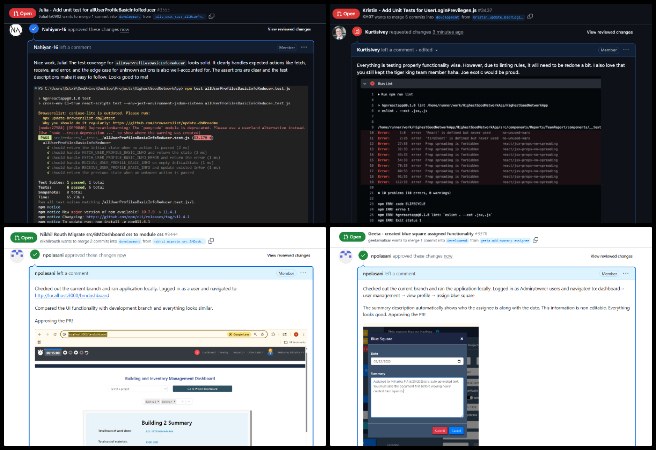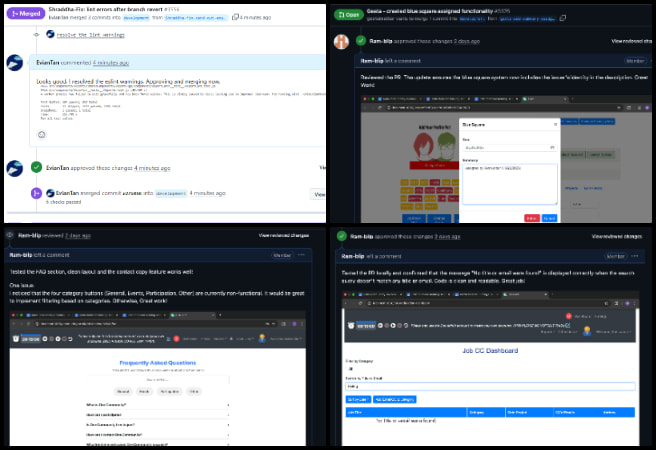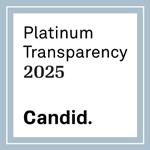A Model for New-world Eco-philanthropy – One Community Weekly Progress Update #636
A model for new-world eco-philanthropy can address sustainability, health, food insecurity, homelessness, and more. Here’s One Community’s update covering our process of creating all the necessary open source and free-shared components to build them. These open source components include sustainable and DIY-replicable approaches to food, energy, housing, education, for-profit and non-profit economic design, social architecture, fulfilled living, global stewardship practices, and more.
- Here’s our project overview
- Here’s our world-change methodology
- Here’s how this becomes self-replicating
- Here’s how we are open source and free-sharing all the do-it-yourself designs
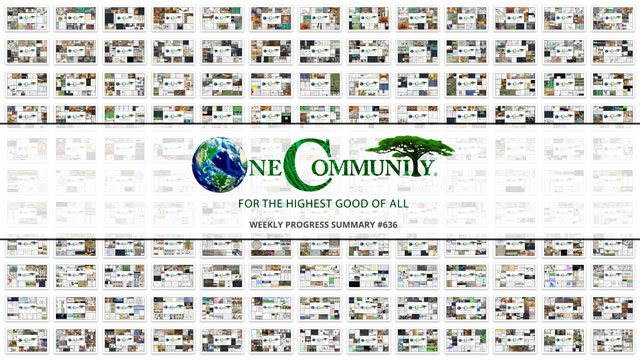
OUR MAIN OPEN SOURCE HUBS
Click on each icon to be taken to the corresponding Highest Good hub page.
One Community’s physical location will forward this movement as the first of many self-replicating teacher/demonstration communities, villages, and cities to be built around the world. This is the May 26th, 2025 edition (#636) of our weekly progress update detailing our team’s development and accomplishments:
A Model for New-world Eco-philanthropy
One Community Progress Update #636
DONATE | COLLABORATE | HELP WITH LARGE-SCALE FUNDING
CLICK HERE IF YOU’D LIKE TO RECEIVE AN EMAIL EACH WEEK WHEN WE RELEASE A NEW UPDATE
YOU CAN ALSO JOIN US THROUGH SOCIAL MEDIA
ONE COMMUNITY WEEKLY UPDATE DETAILS
HIGHEST GOOD HOUSING PROGRESS
 One Community is creating a model for new-world eco-philanthropy through Highest Good housing that is artistic and beautiful, more affordable, more space efficient, lasts longer, DIY buildable, and constructed with healthy and sustainable materials:
One Community is creating a model for new-world eco-philanthropy through Highest Good housing that is artistic and beautiful, more affordable, more space efficient, lasts longer, DIY buildable, and constructed with healthy and sustainable materials:
- Learn about: Our Upcoming Crowdfunding Campaign
- Learn about the different village models: 7 Sustainable Village Models
- Visit the open source portals for the first two: Earthbag Village OS Hub | Straw Bale Village OS Hub
This week, Adil Zulfiquar (Engineer) continued working on the Vermiculture Toilet engineering designs. Adil worked on the vermiculture temperature monitoring and controls report by incorporating feedback and updating content related to the temperature monitoring device, controller, and heating and cooling devices. He reformatted the sections, rearranged the devices in each category based on ranks, and combined and linked all associated tables and spreadsheets. One Community’s open source launching of a model for new-world eco-philanthropy begins with Earthbag Village, the first of seven planned villages providing housing. See below for some of the pictures related to this work.
Derrell Brown (Plumbing Designer) continued working on the Earthbag Village 4-dome home plumbing and mechanical details. Derrell coordinated with Michaela to address follow-up items related to finalizing the mechanical, plumbing, and electrical plans. The work included modeling recent conflicts and evaluating options for routing refrigerant lines, the water heater, and outdoor unit conduit in the attic space to prevent future issues. After reviewing the latest markup with the architect, he revised the refrigerant line layout to follow a parallel path to the hatch entry, adjusted the exhaust fan discharge to avoid code-related conflicts, and updated model details to include reference bubbles aligned with points on the floor plan. He then provided the Revit models and plan drawings for the architect’s review. One Community’s open source launching of a model for new-world eco-philanthropy begins with Earthbag Village, the first of seven planned villages providing housing. See below for some of the pictures related to this work.
Faeq Abu Alia (Architectural Engineer) continued his work on the Earthbag Village 4-dome home renders. Faeq completed the interior walkthrough rendering for the 4-Dome Home project, adjusted render settings to refine lighting, shading, and material appearance, exported the final video file, reviewed the footage to confirm that visual fidelity and motion smoothness met project standards, and submitted the presentation to the project lead for review and approval. The Earthbag Village is the first of 7 to be built as the housing component of One Community’s open source plans of a model for new-world eco-philanthropy. View examples of this work in the pictures provided below.
Karthik Pillai (Mechanical Engineer) continued helping finish the Earthbag Village 4-dome home roof plan. Karthik focused on the 4-dome cluster roof design, which was prioritized due to its role in the project timeline. Finite Element Analysis (FEA) was completed on the roof rafters and joists, incorporating structural modifications based on input from Micaela, and the results were shared with her for review. Work also continued on the vermiculture toilet design, with attention on the Unistrut support structure; modifications were made and followed by FEA to assess the structural impact of the changes. The analysis for the Unistrut structure was completed, and progress was also made on the waste dumping mechanism, with further development planned as part of the ongoing design process. As the first of seven planned villages, the Earthbag Village provides the initial housing within One Community’s open source designs of a model for new-world eco-philanthropy. See the work in the collage below.
Ketsia Kayembe (Civil Engineer) continued working on the Earthbag Village designs related to Rainwater Harvesting and Water Catchment. Ketsia worked on revising the cost analysis based on the updated design of the stormwater and rainwater systems for the Earthbag Village. She identified the required materials according to the recent design changes and determined the appropriate sizes and dimensions for drainage structures including inlets, junction boxes, catch basins, pipes, tanks, and barrels. She also began researching excavation and maintenance cost estimates for the swale and bioretention pond using the dimensions and other details provided in the design documents. One Community’s open source framework of a model for new-world eco-philanthropy begins with Earthbag Village, the first of seven planned villages providing housing. See below for some of the pictures related to this work.
Michaela Silva (Architect) continued working on the architectural details for the Earthbag Village 4-dome home design. Michaela continued coordination of MEP items related to the attic hatch and the path of electrical to the main panel. She reviewed the 6-dome cluster documents and provided comments on updates needed to adapt them from the 4-dome drawings. She also worked on the roof deck and insulation details for the 4-dome home. As the first of seven villages in One Community’s open source plan of a model for new-world eco-philanthropy, the Earthbag Village represents the housing element. See her work in the collage below.
Rumi Shah (Civil Engineer) continued working on the Earthbag Village upgrades to bring our designs closer to construction-ready plans. work on the drawings was limited while awaiting feedback to ensure that major revisions would align with expectations and project requirements. In the meantime, a few minor adjustments were implemented where sufficient clarity was available. With the necessary feedback now received, major updates are planned for the following week to bring the drawings in line with the outlined objectives. One Community’s open source resources of a model for new-world eco-philanthropy begin with the Earthbag Village, the first of seven planned villages providing housing. See below for some of the pictures related to this work.
Yi-Ju Lien (Environmental Engineer) continued her work on the Earthbag Village LEED points related to stormwater retention. Yi-Ju addressed issues related to document naming and organization to align her files with the current work format, allowing for clearer updates to her work on the Earthbag Village stormwater management design. She also revised the content of the stormwater management plan by modifying the plan description to reflect changes in her design, highlighting the importance of maintaining collaboration and unity in a model for new-world eco-philanthropy. See some of the work done in the collage below.
DUPLICABLE CITY CENTER PROGRESS
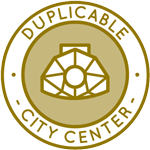 One Community is creating a model for new-world eco-philanthropy through a Duplicable and Sustainable City Center that is LEED Platinum certified/Sustainable, can feed 200 people at a time, provide laundry for over 300 people, is beautiful, spacious, and saves resources, money, and space:
One Community is creating a model for new-world eco-philanthropy through a Duplicable and Sustainable City Center that is LEED Platinum certified/Sustainable, can feed 200 people at a time, provide laundry for over 300 people, is beautiful, spacious, and saves resources, money, and space:
- Learn about this building and it’s function: Duplicable City Center Open Source Hub
This week, Andrew Chen (Industrial Designer) continued working on the Dormer second-floor window for the Duplicable City Center. He completed the material parts drawings, finalized the layouts, and configured the dimensions. He also began work on the assembly instructions to show how the parts fit together, focusing on gathering model renders to illustrate the step-by-step assembly process. One Community’s Duplicable City Center stands as a model for new-world eco-philanthropy through its open-source innovation. Browse the photos below for a look at this work.
Ariana Virginia Gutierrez Doria Medina (Industrial Designer) has continued the analysis and cost estimation of the windows for the Duplicable City Center. She focused on detailing the window assembly. The final assembly forms the basis for creating the assembly instructions. To make them easier to understand, the process was divided into three subassemblies. To make the assembly steps clearer, some images will be attached. Considering that some small modifications have been made to the parts, a new cost estimation is provided. The Duplicable City Center highlights One Community’s open-source approach as a model for new-world eco-philanthropy. Some of this work is shown in the pictures below.
Mihir Patki (Civil and Construction Engineer) worked on updating the 2D CAD drawings for the Duplicable City Center project. CAD drawings were updated to refine zone layouts and align them with rainwater harvesting zones. The SketchUp model was modified to include revised drainage flow paths from the kitchen and shower areas, as well as the structural placement of gutters and downspouts. The Excel calculations file was updated to match pipe sizing to zone-specific GPM values. A detailed component-level cost table was created. It includes square and round downspout systems with associated elbows, sleeves, brackets, fasteners, and quantity estimates. Slope rates and linear lengths were calculated to confirm design compliance with relevant codes. Work began on integrating these updates into the website content document using One Community’s revision formatting standards. The Duplicable City Center represents One Community’s open-source efforts in building a model for new-world eco-philanthropy. See the photos below for a preview of this work.
Rudrani “Sravya” Mukkamala (Mechanical Engineer) continued researching the structural components of a Duplicable City Center hydraulic elevator. The work focused on gathering and organizing relevant information. Notes were compiled on code compliance, maintenance procedures, and installation processes. These documents were created to offer clear guidance for future reference, ensuring essential practices, regulations, and procedures are preserved and easily accessible. The Duplicable City Center exemplifies One Community’s open-source vision as a model for new-world eco-philanthropy. See the images below to explore this progress.
Shu-Tsun (Engineer) continued working on the Duplicable City Center by conducting the structural and frame analysis of the City Center dome using Autodesk Inventor and updating her assigned spreadsheet. She made significant progress on the structural load analysis by refining the wind and snow load evaluations. She incorporated real-world wind data into the spreadsheet, which allowed her to revise the initial wind load model—which had originally yielded less favorable outcomes—resulting in more accurate, site-specific results. Shu-Tsun also performed a detailed snow load simulation using actual project data to validate and reinforce her updated analysis. The Duplicable City Center reflects One Community’s open-source commitment to creating a model for new-world eco-philanthropy. Pictures below highlight this work.
HIGHEST GOOD FOOD PROGRESS
 One Community is creating a model for new-world eco-philanthropy through Highest Good food that is more diverse, more nutritious, locally grown and sustainable, and part of our open source botanical garden model to support and share bio-diversity:
One Community is creating a model for new-world eco-philanthropy through Highest Good food that is more diverse, more nutritious, locally grown and sustainable, and part of our open source botanical garden model to support and share bio-diversity:
- Learn about the structures: Hoop House Hub | Aquapini & Walipini Open Source Hub
- See what we’ll be growing: Gardens & Hoop Houses | Large-scale Structures | Food Forest | TA
This week, the core team continued working on the Master Tools, Equipment, and Materials/Supplies document. They incorporated photographs and descriptive narratives for three additional chainsaw supplies—fuel stabilizer, bar oil, and two-cycle mix oil—into the Master List. Subsequently, all PEX entries were removed from the Master Tools document, except those still specified for the earthbag dome construction. These removed entries will be replaced with new listings for PVC and black polyethylene piping. Furthermore, they cross-referenced all “ORCH” designations with the listed items through page 196. The Highest Good Food initiative is a key component of One Community’s open source plans, focused on creating a model for new-world eco-philanthropy, and exemplifies the organization’s commitment through innovative design and implementation. Below are images showcasing this work.
Chelsea Mariah Stellmach (Project Manager) continued her work on the Transition Food Self-sufficiency Plan menus and customization spreadsheets. She worked on Tanmay’s “Food Procurement and Storage Overview,” adding comments and making minor edits to the document. Tanmay’s document was the top priority and will eventually be integrated with her work (the Recipe Build Out Tool and Self-Sufficiency Plan reports). She also finalized the revisions to the Recipe Build-Out Tool Page Report. As an essential aspect of One Community’s open source goals, the Highest Good Food initiative supports creating a model for new-world eco-philanthropy as a foundation for sustainable living. Below are some of the images showcasing this work.
Dirgh Patel (Volunteer Mechanical Engineer) continued assisting with the Climate Battery design improvements. He completed formatting the report and incorporated it into a document titled Copy of Open-Source Climate Battery Design Webpage Content for Editing/Updating, also adding the final report index to the same file. He inserted hyperlinks to connect results sections with corresponding FEA simulation files stored in BOX and updated the file names for consistency. Dirgh resumed work on enhancing thermal solutions for the greenhouse by refining image references, improving explanations, and strengthening the overall clarity and structure of the report. He linked all section titles, included image descriptions, updated all images to remove side boundaries, and added explanatory details to both the calculations and visual content for improved clarity. One Community’s open source mission is powerfully reflected in the Highest Good Food initiative, which is focused on advancing and creating a model for new-world eco-philanthropy for global benefit. The following visuals highlight key outcomes of this initiative.
Jay Nair (BIM Designer) continued working on Aquapini and Walipini Planting and Harvesting lighting and HVAC design. He worked on the lighting energy calculations for the Solawrap roof design of Walipini 1 using updated seasonal DLI data. The calculations were adjusted to reflect changes in natural light availability throughout the year, allowing more accurate energy estimates and improved alignment with the plant growth requirements and project goals. The Highest Good Food initiative plays a leading role in One Community’s open source platform, promoting and creating a model for new-world eco-philanthropy through sustainable and participatory development. Below are some of the images showcasing this work.
Keerthi Reddy Gavinolla (Software Developer) continued working on the Highest Good Food page additions, covering small-business and urban community options. She made changes to bullet points for improved clarity, updated headings for consistency, and added relevant links to enhance navigation. Also edited the overall formatting to ensure better structure, readability, and alignment across the page. Built on One Community’s open source foundation, the Highest Good Food initiative drives creating a model for new-world eco-philanthropy to empower communities with self-sustaining systems. Her contributions are highlighted in the collage below.
Pallavi Deshmukh (Software Engineer) adding the new Zenapini 2 content to the Aquapini and Walipini Planting and Harvesting page. She also continued integrating GIS content into the permaculture web page based on Jae’s feedback. She linked headers in the web design to the appropriate pages to improve clarity. Pallavi scheduled multiple interviews, completed six, and submitted the corresponding notes and documentation. She created Blog 635, reviewed teammates’ work, and integrated their contributions to ensure the content was complete. Fulfilling One Community’s open source objectives, the Highest Good Food project integrates the creation of a model for new-world eco-philanthropy into a larger vision of regenerative living. Her contributions are highlighted in the collage below.
Tanmay Koparde (Industrial Engineer and Team Administrator) continued optimizing the Food Procurement and Storage Plan to enhance efficiency and sustainability. He incorporated all of Jae’s suggestions into the food procurement document, including formatting, content editing, picture updates, and error corrections. He ensured the document was polished and accurate. Additionally, Tanmay completed his Sunday administrative task by working on Blog 635, maintaining consistency and quality across all assigned responsibilities. Through the lens of open source development, One Community’s Highest Good Food initiative utilizes creating a model for new-world eco-philanthropy to support replicable ecological solutions. See his work in the collage below.
HIGHEST GOOD ENERGY PROGRESS
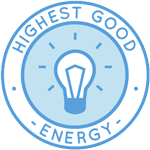 One Community is creating a model for new-world eco-philanthropy through Highest Good energy that is more sustainable, resilient, supports self-sufficiency and includes solar, wind, hydro and more:
One Community is creating a model for new-world eco-philanthropy through Highest Good energy that is more sustainable, resilient, supports self-sufficiency and includes solar, wind, hydro and more:
- Learn about the open source sustainable-energy foundations: Solar, Hydro, and Wind
- Explore our research into the most sustainable products and companies for saving water and energy: Insulation, Eco-laundry, Lightbulbs and Light Bulb Companies, Doors and Door Companies, Windows and Window Companies, Toilets, Faucets and Faucet Accessories, Urinals, and more.
This week, Dishita Jain (Data Analyst) continued assisting with the Highest Good Energy research and cost analysis for establishing global eco-balance. She added shared folder resources, organized relevant reference PDFs, and analyzed the cost structures of different project phases. She also updated the Excel sheet with icon images and hyperlinks, and submitted it for review. In parallel, Dishita supported the OC Administration project by completing tasks related to incorporating the Training Team’s review and feedback. She revised and resubmitted a PDF with the required changes, addressed follow-up feedback after the initial submission, and offered feedback on team member contributions through the administrative portal. One Community’s open source mission is powerfully reflected in the Highest Good Energy initiative, which is focused on advancing a model for new-world eco-philanthropy for global benefit. Below are some of the images showcasing this work.
Muhammad Sarmad Tariq (Electrical Engineer) continued assisting with off-grid and grid-tied Solar Microgrid comparisons as part of the Highest Good Energy component. He began integrating a net-zero PV system into the report and calculator designed to estimate profit and net savings for both off-grid and grid-tied solar PV systems. Muhammad reviewed the Excel calculations and varied PV system sizes to determine the point at which no additional electricity needed to be purchased from the grid, achieving a net-zero outcome. Driven by its open source philosophy, One Community created the Highest Good Energy initiative to pioneer sustainable practices through advancing and creating a model for new-world eco-philanthropy. See his work in the collage below.
HIGHEST GOOD EDUCATION PROGRESS
 One Community is creating a model for new-world eco-philanthropy through Highest Good education that is for all ages, applicable in any environment, adaptable to individual needs, far exceeds traditional education standards, and more fun for both the teachers and the students. This component of One Community is about 95% complete with only the Open Source School Licensing and Ultimate Classroom construction and assembly details remaining to be finished. We’ll report on the final two elements to be finished as we develop them. With over 8 years of work invested in the process, the sections below are all complete until we move onto the property and continue the development and open sourcing process with teachers and students – a development process that is built directly into the structure of the education program and everything else we’re creating too:
One Community is creating a model for new-world eco-philanthropy through Highest Good education that is for all ages, applicable in any environment, adaptable to individual needs, far exceeds traditional education standards, and more fun for both the teachers and the students. This component of One Community is about 95% complete with only the Open Source School Licensing and Ultimate Classroom construction and assembly details remaining to be finished. We’ll report on the final two elements to be finished as we develop them. With over 8 years of work invested in the process, the sections below are all complete until we move onto the property and continue the development and open sourcing process with teachers and students – a development process that is built directly into the structure of the education program and everything else we’re creating too:
- Program Overview: Education Open Source Hub
- How the components work together in designing human orchestrated eco-abundance: How to use the Education for Life Program
- Lesson Plans for Life – Lesson Plans How-to
- Foundations of Outstanding Leaders, Teachers, and Communicators
- Curriculum for Life
- Teaching Strategies for Life
- Learning Tools and Toys for Life
- Evaluation and Evolution
This week, Chitra Siddharthan (Data Analyst and Team Administrator) continued focusing on preparing the weekly summary, updating the blog, and organizing Dropbox files for Code Crafters, Week 635. She also reviewed submissions from Meghan and Himanshu. The teacher-student snapshot wireframe was finalized based on input from Harshitha, and documentation for the updated version was completed. She reviewed Phase 2 pull requests, ensuring new PRs were either merged or flagged for required changes—including PR#3565 and PR#1417. Tasks were added to the tracker, and updates were made to the user manual for Phase 2. Completed Figma wireframes were sent to Harshitha for feedback, and work began on the Lesson Plan UI. She also responded to Slack messages as part of ongoing coordination and communication. With sustainably built classrooms like this, One Community stands as a model for new-world eco-philanthropy and a path to planet-wide transformation. See the collage below for her work.
Harshitha Rayapati (Program Manager) continued work on detailing deliverables for the Highest Good education software platform, outlining various components, developing Figma designs, and expanding the visual layout of the student dashboard. This week, she focused on reviewing and adjusting the teacher dashboard Figma design to improve clarity and ensure seamless integration with the student dashboard—including commenting functionality and integration of related features. She also created a software outline for the student-facing interface to enable assignment submissions, question posting, and review requests. Jaiwanth was onboarded to Phase 4 front-end development and design tasks, with coordination aligned to prioritized Figma design components. Team check-ins were conducted with Sidhartha, Chitra, Anuneet, and Ravi to gather updates on front-end and back-end progress, resolve blockers, and clarify software components. Harshitha reviewed Ravi’s progress on the student dashboard homepage and identified additional design tasks. She also worked on compiling the weekly blog update, reviewed the Graphic Design Team’s weekly progress, edited the blog page, and created a collage. One Community’s model of sustainably built classrooms exemplifies a model for new-world eco-philanthropy and sustainable global change. See the collage below for her work.
Mrinalini Raghavendran (Software Engineer) continued refining and documenting frontend and backend requirements for graph-related features. She added new functionality to the codebase and addressed several local errors, including issues related to Axios. She spent time debugging these errors and applying incremental styling updates. To improve maintainability, she reorganized and modularized sections of the code over several development sessions. After resolving the previous day’s errors, she continued enhancing the styling and expanding the modular structure. Through classrooms like this, One Community advances a model for new-world eco-philanthropy and offers a replicable solution for global sustainable development. See the collage below for her work.
HIGHEST GOOD SOCIETY PROGRESS
 One Community is creating a model for new-world eco-philanthropy through a Highest Good society approach to living that is founded on fulfilled living, the study of meeting human needs, Community, and making a difference in the world:
One Community is creating a model for new-world eco-philanthropy through a Highest Good society approach to living that is founded on fulfilled living, the study of meeting human needs, Community, and making a difference in the world:
- Read the Highest Good society overview: Highest Good Society
- Learn about the model for fulfilled living and sharing: A Day in the Life
- Learn about the 4 economic models: RBE | For-profit | Non-profit | Entrepreneurship
- Learn about our open source community collaboration and management software: The Highest Good Network
This week, the core team completed over 49 hours managing additional volunteer work reviews not listed above, handling emails, managing social media accounts, supporting web development, identifying new bugs, integrating bug fixes for the Highest Good Network software, and interviewing and onboarding new volunteer team members. They also shot and incorporated the video above, which discusses how a model for new-world eco-philanthropy serves as a foundation for the bigger picture of everything One Community is doing. The image below shows some of this work.
This week, Govind Sajithkumar (Project Manager) continued focusing on analytics and content management for Facebook and Instagram via Meta platforms. He scheduled and uploaded new posts to both accounts, maintaining content rotation to ensure consistent platform activity. He logged all content metadata—publishing times, descriptions, and media files—into the Open Source spreadsheet for tracking purposes. Govind also refreshed tracking documentation with current scheduling and audience metrics to support performance analysis. He updated the social media analytics spreadsheet with the latest demographic data for both platforms and ensured the master spreadsheet reflected accurate audience insights. He also managed administrative tasks including PR Review Team coordination, document feedback, WordPress updates with team summaries and collages, and maintenance of PR tracking tables. Additionally, Govind participated in the admin feedback review process with fellow administrators. This effort supports One Community’s broader mission of a model for new-world eco-philanthropy. The images below showcase some of this work.
Hritvik Mahajan (Data Analyst) continued supporting both marketing and administrative tasks this week, with contributions to the Marketing and Promotion and Highest Good Network Software Development projects. On the marketing side, he managed social media posts for the HGN project and shared high-engagement content in Twitter communities, helping attract new followers. He also tracked and updated relevant data in designated spreadsheets. For the HGN Software Development project, Hritvik conducted frontend testing activities as part of the Phase 1 development process, reviewed multiple pull requests, and followed up with team members on Slack to resolve merge conflicts and address requested changes. All contributions were documented accordingly. This initiative furthers One Community’s goal of advancing a model for new-world eco-philanthropy. The following images show his work for the week.
Jaiwanth Reddy Adavalli (Project Manager) continued developing the Job Applicants page along with components of the Highest Good Network Phase 2 and Phase 4 dashboards, including the PR Team analytics section. He created wireframes for both the software interface and data analytics dashboards to guide ongoing development. As part of the PR review team, he also reviewed pull requests submitted by the volunteer team assigned to him. This project plays an important role in One Community’s commitment to a model for new-world eco-philanthropy. The following images show his work for the week.
ADMINISTRATION TEAM
The Administration Team summary, covering their work administrating and managing most of One Community’s ongoing processes for a model for new-world eco-philanthropy was managed by Bhakti Tigdi (Project Manager) and includes Anuneet Kaur (Administrator), Himanshu Mandloi (Engineering Project Manager), Khushie Zaveri (Communication Strategist), Meghan Nguyen (Project Administrator), Neeharika Kamireddy (Data Analyst), Olawunmi “Ola” Ijisesan (Administrative and Management Support), Olimpia Borgohain (Data Analyst and Team Administrator), Rachna Malav (Data Analyst), Rishi Sundara (Quality Control Engineer and Team Administrator), Ryutaro Wongso (Economic Analyst and Team Administrator), and Saumit Chinchkhandi (Administrative Assistant and Software Engineer). The Highest Good Network software is how we will manage and objectively measure our progress toward a model for new-world eco-philanthropy through our social architecture, construction, production, and maintenance efforts.
This week, the Administration team supported a variety of functions including research, content management, analytics, interviews, platform testing, and volunteer coordination. Anuneet focused on identifying sustainable adhesives, reviewing academic sources, updating village pages, and optimizing media for SEO. She created volunteer bios, updated tracking spreadsheets, and completed the shared navigation bar for teachers in Figma. Himanshu maintained daily timelog reviews, updated task assignments, followed up on unresponsive members, and reported concerns to leadership. He also authored a blog post for the Highest Good Network and reviewed admin activity. Khushie continued expanding the Metrics Campaign through outreach on Reddit and Mastodon, updated the media kit, drafted email templates, and created briefs for the graphics team. She also aligned with Meghan in a weekly sync to coordinate campaign and social media planning. This work contributes to One Community’s commitment to building a model for new-world eco-philanthropy.
Meghan compiled summaries and media for the weekly progress blog, met with Khushie to discuss campaign plans, developed a campaign graphic, and started building a multi-platform social media calendar. Neeharika worked on the PR analytics dashboard in Figma, completed two dashboard designs, and addressed admin-related feedback. Ola managed Pinterest scheduling, created a new admin documents folder, monitored PR tasks, responded to comments, and followed up on pending items. Olimpia created her team’s blog, edited LinkedIn content, scheduled posts, and analyzed LinkedIn follower and impression data. Rachna conducted an interview, managed a rescheduling request, worked on SEO pages, and followed up on email communications. Rishi created member collages, updated his blog, handled SEO for Blog #635, reviewed completed tasks, and tested multiple pull requests. Ryutaro continued leading the Binary Brigade team, reviewed task progress, updated the team summary, created a visual collage and blog post, and progressed in cost analysis for the City Center. Saumit tested various pull requests, reviewed a WordPress blog, documented interview outcomes, and contributed to PR team workflows. This work contributes to One Community’s commitment to a model for new-world eco-philanthropy. See below to view images of their work.
GRAPHIC DESIGN TEAM
The Graphic Design Team’s summary was managed by Harshitha Rayapati (Program Manager) and includes Aurora Juang (Graphic Designer), and Junyuan Liu (Graphic Designer, UI/UX Designer) covering their graphic design work supporting a model for new-world eco-philanthropy. This week, Aurora focused on creating several social media posts and managing volunteer announcements. She finalized chapter icons for the Seven Villages book and website, fixed broken links in the digital version, and corrected earlier mistakes in bio announcements. Using Google Sheets, she updated and published volunteer bios with attention to accuracy and consistency, which helped streamline team coordination and onboarding.
Junyuan created social media content by collecting images, exploring design options in design software, and completing three new social media images. He also began sourcing images and developing design concepts for the next visual piece. Additionally, he brainstormed strategies for future image creation and worked on the “Most Sustainable” image by inserting text and adjusting the layout. See the Highest Good Society pages for more on how this contributes to a model for new-world eco-philanthropy. See the collage below to view some of their work.
HIGHEST GOOD NETWORK PROGRESS
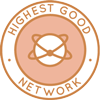 One Community is creating a model for new-world eco-philanthropy through open source Highest Good Network® software that is a web-based application for collaboration, time tracking, and objective data collection. The purpose of the Highest Good Network is to provide software for internal operations and external cooperation. It is being designed for global use in support of the different countries and communities replicating the One Community sustainable village models and related components.
One Community is creating a model for new-world eco-philanthropy through open source Highest Good Network® software that is a web-based application for collaboration, time tracking, and objective data collection. The purpose of the Highest Good Network is to provide software for internal operations and external cooperation. It is being designed for global use in support of the different countries and communities replicating the One Community sustainable village models and related components.
- Learn about our open source community collaboration and management software: The Highest Good Network
This week, the core team continued their work on the Highest Good Network PRs and confirmed the following as fixed: the last table on the Reports Team page now displays properly on small screens (#3269); the “Which Tool or Equipment to Update” page under Phase 2 has been updated (#3254); converting a time entry to tangible correctly adds hours to the respective task (#1897); checkboxes and their labels are now properly aligned (#2925); and the bug causing the viewer to exit another person’s dashboard when clicking a person in the Tasks tab has been resolved. One issue remains unresolved: the search functionality is still missing on the Reports > Team Member page (#2816). Additionally, eight new issues were reported. These improvements represent incremental steps toward the realization of a model for new-world eco-philanthropy. See the Highest Good Society and Highest Good Network pages for more on how this relates to a model for new-world eco-philanthropy. The collage below shows some of their work.
ALPHA SOFTWARE DEVELOPMENT TEAM
This week, the Alpha Software Team, covering their progress on the Highest Good Network software, was managed by Lin Khant Htel (Frontend Software Developer), and the team includes Jiaqi Nie (Software Engineer), Nikita Kolla (Full Stack Developer), and Varun Reddy Mogili (Software Engineer). This platform streamlines internal communication and operations with the overarching aim of establishing global eco-balance. Lin reviewed and approved PR #3522 after testing the code on a local machine and confirming that all eight test cases passed as expected. Lin also reached out to team members for consultation, reviewed Alpha team members’ weekly summaries, photos, and videos, and handled management duties for the Alpha Team. This work reflects One Community’s ongoing commitment to making a model for new-world eco-philanthropy.
This week, Jiaqi finished implementing the Dynamic Scoring and Ranking Logic for the questionnaire dashboard backend. He focused on fixing an issue in his development environment that caused a backend runtime error related to a compression package. He discussed the issue with Jae and reached out to Linh Huynh for assistance. He is continuing to work on resolving the error and is waiting for Linh’s response. Nikita completed the Phase 2 Summary Dashboard task, which included adding a horizontal bar graph for P5. She also completed the longest open issues chart and the most expensive issues task. In addition, she worked on the Redux portion of the frontend and made a last-minute update to the fetching logic. This effort aligns with One Community’s dedication to creating a model for new-world eco-philanthropy. Varun implemented a feature assigned by Jae to display deactivated team members in the “last week” tab of the weekly summary report. He completed backend development and testing for this feature and began integrating the necessary frontend logic. He submitted pull requests to both repositories and posted a video walkthrough of the changes. He also reviewed Sundar Machani’s pull request but identified dependency conflicts that prevented approval and requested fixes. Additionally, he reviewed another pull request to confirm CSS updates and ensure there were no conflicts with existing styles. See the images below for more illustrations of the team’s work, reflecting the vision of building a model for new-world eco-philanthropy.
BINARY BRIGADE SOFTWARE DEVELOPMENT TEAM
The Binary Brigade Team’s summary overseeing advancements in the Highest Good Network software was managed by Aureliano Hubert Maximus (Volunteer Software Engineer) and includes Amalesh Arivanan (Software Engineer), Anirudh Sampath Kumar (Software Developer), Geeta Matkar (Software Engineer), Jaissica Hora (Software Engineer), Sabitha Nazareth (Software Engineer), Samman Baidya (Software Engineer), Sidhartha Sunkasari (Software Engineer), Vasavi Vuppala (Software Engineer), and Vamshi Gutha (Full-Stack Developer). The Highest Good Network software is how we’ll be managing and objectively measuring our progress in creating a model for new-world eco-philanthropy through our social architecture, construction, production, and maintenance processes.
This week, Amalesh resolved linting issues in the final five folders that had previously generated around 300 errors and fixed related unit test failures, supporting One Community’s mission to develop a model for new-world eco-philanthropy. He documented the work with screenshots and videos, uploaded them to Dropbox with proper naming conventions, tracked time using the HGN timer, and completed onboarding steps. Anirudh addressed complex merge conflicts and application-level errors in two pull requests, PR 1793 (frontend) and PR 690 (backend). Aureliano worked on auto-poster features for Instagram, Threads, and Imgur under the HGN Software Development project, aligning code updates with the broader goal of developing a model for new-world eco-philanthropy. Between May 18 and 24, he cleaned up the codebase, moved Instagram authentication to the backend, resolved merge and linting issues, and aligned Imgur’s frontend and backend structure with that of Instagram.
Geeta updated the social media dashboard task based on feedback, transferred ownership to Jae, and worked on resolving a merge conflict for task PR 3376, aligning with One Community’s dedication to creating a model for new-world eco-philanthropy. Jaissica built a grouped bar graph component using Recharts to visualize injury severity by worker category for the Phase 2 Summary Dashboard, integrating design decisions that support One Community’s vision for a model for new-world eco-philanthropy. She connected it to backend data using Redux, added dynamic filtering and theming support, and ensured real-time updates based on user input. Sabitha created a Bitly developer account, authenticated API access, and studied the documentation and existing pull requests to design an auto-posting workflow. Samman continued developing the grouped bar graph for displaying injury severity by projects, working across both frontend and backend to create schemas and filters. He resolved data integration issues and progressed toward completing the task by fixing remaining bugs. This task plays a role in One Community’s path toward a model for new-world eco-philanthropy.
Sidhartha began implementing backend data models for the education portal, translating UML diagrams into structured schemas while ensuring the architectural design contributes to One Community’s commitment to building a model for new-world eco-philanthropy. He focused on defining entity relationships and aligning them with authentication and access controls. Vamshi worked on the Phase 2 line chart task by gathering data requirements, reviewing existing dashboard structures, and connecting a new component to sample injury data, which support One Community’s mission to inspire a model for new-world eco-philanthropy. Initial issues with data formatting and rendering were identified, and work continued to refine the chart with real-time functionality. Vasavi implemented a smooth line chart using Recharts to show injury data over time for the Phase 2 Summary Dashboard, integrating features such as reusable layouts and view toggles in alignment with playing a role in One Community’s path toward a model for new-world eco-philanthropy. She transitioned from using Chart.js and completed three core chart components. See the Highest Good Society and Highest Good Network pages for more on how this relates to creating a model for new-world eco-philanthropy. View some of the team’s work in the collage below.
BLUE STEEL SOFTWARE DEVELOPMENT TEAM
The Blue Steel Team’s summary, presenting their work on the Highest Good Network software was managed by Sheetal Mangate (Software Engineer) and includes Linh Huynh (Volunteer Software Engineer), and Ramakrishna Aruva (Software Engineer). The Highest Good Network software is how we’ll be managing and objectively measuring our process for a model for new-world eco-philanthropy. This week, Linh worked on developing a Bluesky auto-poster feature integrated into the Highest Good Network application. His tasks included expanding the frontend interface using React and Bootstrap to support user input, connection, post creation, and post management functionalities. The interface was updated to accommodate multiple media types such as images, videos, and GIFs. Linh also made layout improvements, including better spacing between timestamps and control buttons. On the backend, he designed RESTful API endpoints for connecting to Bluesky, creating posts, viewing posts, and deleting posts, organized within a controller-service-router structure. Middleware was modified to enable CORS access with credentials, and express-session was configured to manage session data for Bluesky authentication. Linh verified session handling and frontend-backend communication through testing with credentialed fetch requests. This work supports One Community’s vision of a better future through a model for new-world eco-philanthropy.
Ramakrishna began work on a new task but encountered a blocker caused by a version conflict with a recently installed backend library, which prevented the latest backend code from running. After unsuccessful troubleshooting, he reverted to an older version to maintain progress. Upon reviewing the assigned task, he found that most scenarios were functioning correctly except one, where project color assignments were failing. To resolve this, he researched the D3 library and implemented a function to generate unique and distinctive colors. Initial testing showed that the function performed well in basic scenarios. This effort reflects One Community’s dedication to building a model for new-world eco-philanthropy. Sheetal reviewed official Reddit documentation to understand Reddit’s API endpoints and created the necessary credentials for accessing a Reddit application. She then added backend code to enable Reddit post submissions and implemented logic to generate the access token required for API calls. Sheetal tested the token generation endpoint to confirm its functionality and began investigating an error affecting token acquisition, which must be resolved to make additional Reddit API requests. This project contributes to One Community’s new-paradigm philanthropy and global change initiatives. See the Highest Good Society and the Highest Good Network pages to learn more on how their work contributes to a model for new-world eco-philanthropy. See below to view images of their work.
CODE CRAFTERS SOFTWARE DEVELOPMENT TEAM
The Code Crafters Team, covering their work on the Highest Good Network software, was managed by Sundar Machani (Software Engineer) and includes Ashrita Cherlapally (Software Engineer), Dhrumil Dhimantkumar Shah (Software Engineer), Greeshma Palanki (Software Engineer), Humera Naaz (MERN developer), Pratyush Prasanna Sahu (Software Engineer), Rahul Prasad (Software Engineer), Ravikumar Sripathi (Software Engineer), Sai Moola (Software Engineer), and Sravan Kumar Bodakonda (Software Engineer). The Highest Good Network software is how we’ll manage and objectively measure our process for a model for new-world eco-philanthropy through our social architecture, construction, production, and maintenance processes.
This week, Ashrita implemented dynamic pie charts in the Financial Tracking section of the Phase 2 Dashboard to compare actual vs. planned expenditures. She adjusted the chart layout, styling, and label rendering to fit cleanly within slices. On the backend, she added endpoints to fetch expenditure data and distinct project IDs. She created a frontend dropdown to switch between projects and mapped project IDs to user-friendly labels. She resolved all build and lint issues and created pull requests PR #3565 for the frontend and PR #1417 for the backend. This contribution embodies One Community’s dedication to a model for new-world eco-philanthropy. Dhrumil completed work on the frontend page for the bidding feature (PR #3567), adding a grid layout to display property listings with images, titles, and buttons to place bids. Pagination and responsive design were implemented, including image placeholders and visual cues for interaction. He also resolved a merge conflict with PR #3557 related to the code. This task is part of One Community’s ongoing work to create a model for new-world eco-philanthropy. Greeshma resolved a NotFoundError related to node removal and addressed an error linked to the ForcePasswordUpdate.test.js file in the development branch of the Highest Good Network application. She reviewed PR #1966 and PR #2677 on role-based access restrictions and found that Admin and Volunteer users had proper dashboard access, but usernames for Manager accounts were not displaying, indicating the need to update the WeeklySummariesReport component’s formatted report logic. A new issue in the Project tab causing errors with input fields remains unresolved despite several attempts. This effort moves One Community closer to its vision of a model for new-world eco-philanthropy.
Humera oversaw the functionality of the Personal Max badge system, focusing on identifying and resolving issues related to badge replacement. She verified that duplicate badges were being detected and removed as expected, ensured new badges were correctly added when missing, and confirmed that badge progress was updated based on user activity. She also added debugging logs to monitor the badge assignment logic and validate that badge updates occurred under the correct conditions. This work aligns with One Community’s purpose of being a model for new-world eco-philanthropy. Pratyush created a backend controller file with the required APIs to interact with data models and implement core logic. He defined models and set up routes corresponding to the controller functions, ensuring each endpoint aligned with the intended operations. Work also began on structuring the service layer to separate business logic from routing and controller concerns. On the frontend, he refined the line chart by adding axis labels, data pointers, and hover-over functionality. This endeavor supports One Community’s vision of a thriving model for new-world eco-philanthropy. Rahul focused on implementing the timelog usage tracking functionality by developing the required frontend pages and writing the supporting backend code. He also worked on cleaning up the old frontend codebase to address existing errors. During this process, he reviewed and updated multiple pull requests. Some were successfully fixed and merged, while others are still under investigation due to persistent errors.
Ravikumar finalized the Student Dashboard by updating the layout and replacing icons for key sections. He created panels to display teaching strategies and student-identified life strategies, improved the to-do page for clearer task presentation and progress tracking, and completed the first three activity pages with structured tasks and progress indicators. He also began designing the Past Lesson Plans section to include lesson details and student reflections. This contribution strengthens One Community’s commitment to pioneering a model for new-world eco-philanthropy. Sai Shekhar started work on the task “Phase 2 Summary Dashboard: Create a bar graph for issues breakdown by type.” The backend work included creating an issues schema and a controller file. On the frontend, the bar graph was implemented using the Recharts library. Since there is no dedicated issues page, there was initial uncertainty about where to place the chart. After consulting with others working on related components, the chart was implemented in the weekly project summary dashboard by creating a new card to display it. This work furthers One Community’s efforts to serve as a model for new-world eco-philanthropy. Sravan completed testing and validation for the “Total Injuries Over Time” chart. All filters, including Project, Date Range, Type, Department, and Severity, were confirmed to be working as intended. The chart renders accurately with dynamic data and displays labels clearly at each data point. A backend issue causing empty data responses was identified. Sundar worked on the HGN Software Development project, focusing on the Node.js update, Phase 2 Summary Dashboard, and the Listing and Bidding platform. Merge conflicts for the Node.js update were resolved on multiple days, and unit tests were fixed to align with recent changes. Additional test failures were addressed, and changes were pushed to PR #3487. Compatibility issues with ESLint version 9 were resolved by updating configurations and clearing related linting problems. On the Phase 2 dashboard, the Expected vs. Actual Expense graph was created. See the Highest Good Society and Highest Good Network pages for more on how this relates to a model for new-world eco-philanthropy. View some of the team’s work in the collage below.
DEV DYNASTY SOFTWARE DEVELOPMENT TEAM
The Dev Dynasty Team’s summary, covering their work on the Highest Good Network software, was managed by Honglin Chen (Software Engineer) and includes Dharmik Patel (Software Engineer), Manvitha Yeeli (Software Engineer), Mohan Satya Ram Sara (Software Engineer), Shraddha Shahari (Software Engineer), Vamsi Krishna (Software Engineer), and Zhifan Jia (Software Engineer). The Highest Good Network software is how we’ll manage and objectively measure our process for a model for new-world eco-philanthropy through our social architecture, construction, production, and maintenance processes.
This week, Dharmik worked on the Team Code Outlier Fix and the related red exclamation mark notification feature. He resolved merge conflicts in both frontend and backend codebases, which were caused by updates since the original pull requests. Due to pull request limitations with the forked repository, the work was moved to a proper feature branch. Updated implementations were tested, and new pull requests were raised. Manvitha integrated the Gmail Nodemailer API with the assignBlueSquareForTimeNotMet function, adjusted error-causing parameters, and tested email delivery without affecting existing features. She also resolved merge conflicts in the Add Lessons form and submitted a pull request. This task plays a role in One Community’s path toward a model for new-world eco-philanthropy.
Mohan addressed a layout issue where a dropdown was being overlapped by other content on desktop screens. He identified the problem using DevTools and updated CSS in a scoped stylesheet to fix the stacking conflict without affecting mobile layout. Shraddha fixed the equipment list update button and continued investigating page loading delays. She began looking into an issue with editing email addresses on the profile page, resolved a reverted pull request due to a linting error, and submitted a new one. She confirmed an email-related issue was unrelated to her changes, reported this to Jae, and started reviewing PR #1394. This action reflects One Community’s focus on establishing a model for new-world eco-philanthropy.
Vamsi updated the open issues list to support dark mode, improved spacing and alignment in tables and dropdowns, and reviewed several high-priority pull requests (PRs #3404, #3480, #3486, #3510, #3541, #3552, #3560, and #3567). Zhifan resolved merge conflicts and addressed issues from earlier pull requests, including fixing Netlify setup, text color problems, and a display bug in badge-related components. He also ensured badges appeared correctly using a useEffect hook and fixed a typo affecting user profile information. See the Highest Good Society and Highest Good Network pages for more on how this relates to a model for new-world eco-philanthropy. View some of the team’s work in the collage below.
EXPRESSERS SOFTWARE DEVELOPMENT TEAM
The Expressers Team’s summary, covering their work on the Highest Good Network software, managed by Strallia Chao (Software Engineer), includes Meenashi Jeyanthinatha (Full Stack Developer), Rahul Trivedi (Software Engineer), and Reina Takahara (Software Developer). The Highest Good Network software is how we’ll manage and objectively measure our progress toward a model for new-world eco-philanthropy through innovative software development, testing, and collaboration. This week, Meenashi posted a bid with card details, which were saved in PayPal, and a webhook delivered the information to the server while the bid price was updated via socket. The Bids and BidDeadlines collections were updated with the correct values. A new function, addToBidHistory, was added to the BidDeadlines model to handle bid history updates using a model parameter that updates either the Bids or BidDeadlines collection. The postBidsAndPay function was updated to ensure its BidHistory parameter correctly updates both collections. The BidController was modified to send socket messages. A new field, isClosed, was added to the BidDeadline model with a default value of false. The bid cron job was updated to process expired entries by checking elapsed time, selecting a bid winner, and notifying users via email, SMS, and in-app messages. After processing, the isClosed field is set to true. There is an issue where increasing a user’s bid does not update the PayPal order. Attempts to update the order result in an error, and the cause is still under investigation. This contribution advances One Community’s goal of becoming a model for new-world eco-philanthropy.
Rahul improved the frontend logic to allow smoother transitions between skills components and optimized backend API calls from the frontend for retrieving skills data. He made UI changes to align more closely with the Figma design and tested across different user types to ensure consistency. He completed the HGN Questionnaire Dashboard task, resolved all linting issues, and submitted pull request #3546, which included detailed implementation notes and testing instructions. Reina continued work on a line chart that displays rental costs over time. She added filtering options and styling adjustments, including resizing the chart using CSS. She resolved a broken line display issue by adjusting Chart.js settings for a continuous graph. Filtering functionality was expanded to allow sorting by date, project, and either percentage or total cost. This effort aligns with One Community’s dedication to creating a model for new-world eco-philanthropy. Strallia reviewed PR #3498 related to the team stats chart and PR #3512 for the Work Distribution chart on the Total Org Summary page. She followed up with another manager to confirm backend progress for the Blue Square Stats chart. She worked on the Volunteer Status and Volunteer Activities components, refactoring the code to remove unused elements and connect them to backend data. She verified that the surrounding components were not affected by the updates and submitted these changes in PR #3545. See the Highest Good Society and Highest Good Network pages for more on how this contributed to a model for a new-world eco-philanthropy. See the collage below to view the team’s work. This project supports One Community’s mission to develop a model for new-world eco-philanthropy.
LUCKY STAR SOFTWARE DEVELOPMENT TEAM
The Lucky Star Team’s summary of the Highest Good Network software was managed by Anne Zhang (Software Engineer) and includes contributions from Barnaboss Puli (Volunteer Software Engineer), Dipti Yadav (Software Engineer), Ganesh Karnati (Software Engineer), Koushica Bosadi Ulaganathan (Software Engineer), Manusha Jyasta (Senior Software Engineer), Manoj Gembali (Software Engineer), and Vaibhavi Madhav Deshpande (Software Engineer). This week’s outcome highlighted the value of shared input, aligning with a model for new-world eco-philanthropy’s collaborative approach. Anne began a new task focused on creating posters for Mastodon by reviewing previous developer solutions and gathering relevant resources. She trained teammates currently serving as managers-in-training and provided them with documentation and recorded guidelines. She also managed the Lucky Star team’s reviews and weekly images and addressed questions related to One Community responsibilities. Barnaboss focused on backend development for the Phase 2 Summary Dashboard’s horizontal bar graph titled “Utilization Rate and Downtime of Tools/Equipment.” Throughout the week, he iterated on the Chart.js-driven API endpoints to pull and aggregate tool usage data while refining query logic and payload structure. Midweek, he made progress integrating the new routes, but a MongoDB sync issue surfaced and temporarily blocked testing. In the meantime, he improved data validation code, documented edge-case handling, and outlined a fix for the replication lag. This work contributes to One Community’s commitment to building a model for new-world eco-philanthropy.
Dipti worked on Task #851 to create separate Subscribe and Unsubscribe pages for email management. She built the frontend forms, updated the routes and headers.jsx, and resolved a backend issue that was preventing proper email processing. After the fixes, both features worked as intended. She submitted pull request #1418 for the backend and #3566 for the frontend. Ganesh updated the Tools Most in Need of Replacement dashboard by replacing Recharts with Chart.js, creating a native filter bar with project selection and date controls, and implementing handlers to prevent null reference errors. He added mock data with project and date attributes, adjusted the stylesheet for better responsiveness, ensured full axis label visibility, and updated the dark mode date input background. Koushica worked across several parts of the application. She began by testing a pull request and resolved a collapsed header issue on the main dashboard. She fixed the close button alignment in the “Add Weekly Summary” modal and submitted a pull request. She refactored a CSS file into a module to improve style handling on the resource management dashboard and addressed multiple UI inconsistencies—removing a random “0,” correcting unintended icons, updating resolved task icon colors, and improving the task creation process. She also implemented a hotfix for a header layout issue and reviewed the resource management dashboard codebase. This effort aligns with One Community’s dedication to creating a model for new-world eco-philanthropy.
Manoj resolved merge conflicts in PR #1301 on the backend and completed the merge. He created a new MongoDB collection, uploaded mock data, and developed scripts and logic for a new endpoint to serve tool availability data. He implemented the router, controller, and model components, and verified the endpoint using Postman. Manusha contributed to both the HGN Questionnaire Dashboard and the Job Posting Page Analytics. On the dashboard, she updated the frontend to display community members’ skills and contact information and integrated additional backend fields. For the analytics page, she developed a horizontal bar graph showing hits-to-applications ratio, including both the backend API and frontend display component. Vaibhavi reviewed and tested multiple pull requests in HGN Phase I to ensure code quality and functionality. She also developed an automated poster tool for Twitter/X to support streamlined content sharing. Her work improved the project’s backend reliability and outreach capabilities. See the Highest Good Society and Highest Good Network pages for more on how this relates to a model for new-world eco-philanthropy. See the collage below to view the team’s work.
MOONFALL SOFTWARE DEVELOPMENT TEAM
The Moonfall Team’s summary, covering their work on the Highest Good Network software, was managed by Newell Newell (Manager) and includes Akanksha Singh (Software Developer), Angad Anil Gosain (Volunteer Software Engineer), Bhavpreet Singh (Software Engineer), Lalith Kumar Rajendran (Software Engineer), Shashank Kumar (Software Engineer), and Yili Sun (Software Engineer). This week, Lalith migrated filter changes from the previous codebase to a new functional component structure and pushed the updated implementation to a branch named lalith_filter_2.0, with testing and bug fixes still pending. This work contributes to One Community’s commitment to building a model for new-world eco-philanthropy. Akanksha worked on building an autoposter for Medium by reviewing earlier implementations and started developing APIs to retrieve authenticated user details. She also updated PR #1897 by adding a video demonstration showing the process of adding intangible time entries and confirming correct hour conversion when tasks are made tangible. Angad addressed frontend and backend issues related to time logging, user access, and build errors. He reviewed PR #1287 and backend logic around updateTaskLoggedHours, suggested a future script to reconcile historical data, resolved ESLint issues, React warnings, and build errors, and implemented logic for access toggling, including UI updates and asset creation. This effort reflects One Community’s ambition to build a model for new-world eco-philanthropy.
Bhavpreet worked on the comment section feature, beginning with a basic activity page and adding navigation and comment functionality using a data-driven approach, while also resolving merge conflicts. Yili investigated issues in PR #2583 where behavior differed between local and main environments, documented discrepancies, and shared findings with the team. She also wrote unit tests for emailController.js to improve coverage. This task is part of One Community’s ongoing work to create a model for new-world eco-philanthropy. Newell integrated the better-auth module with a NestJS backend to enable login via multiple providers, implemented SSO integrations, restructured parts of the backend, and added modules for queue monitoring and configuration parsing. Shashank raised the pull request for the role distribution chart component and resolved the identified issues. He also implemented additional changes requested by reviewers, continued work on the summary chart component in the BM Dashboard, and tested backend URLs for data integration with the chart component. See the Highest Good Society and Highest Good Network pages for more information on how this contributed to a model new-world eco-philanthropy. Below is a collage of the team’s work.
REACTONAUTS SOFTWARE DEVELOPMENT TEAM
Reactonauts’ Team’s summary, covering their work on the Highest Good Network software, was managed by Akshay Jayaram (Software Engineer) and includes Ghazi Rahman (Software Engineer Intern), Gmon Kuzhiyanikkal (Software Engineer), Guirong Wu (Software Engineer), Kristin Dingchuan Hu (Volunteer Software Engineer), Nikhil Pittala (Software Engineer), Pallavi Thorat (PR Team O-Sh), Peterson Rodrigues (Full-Stack MERN Stack Developer), Saniya Farheen (Software Engineer), and Siva Putti (Software Engineer) This software is a foundation of One Community tracking and management process for a model for new-world eco-philanthropy. This week, Akshay resolved merge conflicts, implemented validation to block negative inputs in the “Add Task” form, managed the Reactonauts’ progress review, and focused on a model for new-world eco-philanthropy. Ghazi fixed a Git misconfiguration, moved a development branch to the correct repository, helped resolve backend issues affecting financial features, and focused on a model for new-world eco-philanthropy. Gmon fixed the GitHub link issue, completed code reviews, organized media, coordinated on tasks, refined the team toggle feature, and focused on a model for new-world eco-philanthropy. Guirong resolved two older pull requests, fixed mobile display issues for the timer and BM Dashboard, started YouTube integration, documented changes with screenshots, and focused on a model for new-world eco-philanthropy.
Kristin fixed user creation errors by updating schema and controller functions, corrected task time-tracking logic, opened PR 1414, and focused on a model for new-world eco-philanthropy. Nikhil reviewed 14 pull requests across frontend and backend, checked functionality, code quality, and unit test coverage, collaborated with contributors to ensure smooth integration, and focused on a model for new-world eco-philanthropy. Pallavi fixed backend API URL, CORS, and routing issues by updating components to use shared endpoints and debugging route registration, focusing on a model for new-world eco-philanthropy. Peterson improved the styling of a button on the Weekly Progress Editor page that lets users insert images into the message text area, focusing on a model for new-world eco-philanthropy.
Saniya resolved an older pull request and addressed a bug in the HGN Help Form, overcoming file access issues and investigating a page loading problem, focusing on a model for new-world eco-philanthropy. Siva fixed the Select Team dropdown display issue, resolved merge conflicts, and improved team creation functionality, focusing on a model for new-world eco-philanthropy. This work helps One Community’s mission of an open-source paradigm for ecological living. See the collage below to view the team’s work.
SKYE SOFTWARE DEVELOPMENT TEAM
Skye Team’s summary, covering their work on the Highest Good Network was managed by Olimpia Borgohain (Data Analyst and Team Admin) and Luis Arevalo (Software Engineer). The team includes Anthony Weathers (Software Engineer), Gopikalakshmi Asok Kumar (Software Developer), Julia Ha (Software Engineer), and Sai Preetham Dongari (Full Stack Developer). The Highest Good Network software helps manage and objectively continue supporting a model for new-world eco-philanthropy and change focusing on social architecture, construction, production, and maintenance processes to build sustainable and thriving ecosystems. This solution is portable, scalable, and ideal for off-grid or sustainable living communities.
This week, Anthony made changes to the Permission Change Logs Table by removing the Permissions column and using the associated data in the Manage User Permissions section to show which permissions a user has beyond their assigned role to create a model for new-world eco-philanthropy. He added an info modal next to the Reset to Default button to display the selected user’s role and explain which extra permissions would be removed if reset. He encountered a bug involving a repeated permission, which he plans to resolve before submitting a PR. He also submitted a PR to fix a discrepancy on the Reports page where the sum of logged hours in the Total People Report details exceeded the total tangible hours displayed. The fix aligned the totals and excluded users with zero tangible time. A similar issue was found in the Total Project Reports, which he plans to address after resolving the bug in the Permissions Management section.
Gopika worked on two issues on creating a model for new-world eco-philanthropy. For the first, she made updates to fix dark mode display problems in the “Show Total People Report” section, changed the heading tag from <h2> to <h3>, and moved a class assignment to correct text color issues. She also updated the “Select a Filter” text color to match styling used elsewhere. She looked into a reported issue about missing graphs but was unable to reproduce the problem after testing various date ranges. A review of pull request #1005 confirmed that graphs do not display when the selected date range is under one month, which matched the user’s selected range, and she asked Jae for clarification. For the second issue, she worked on the “Old Frontend PR Clean Up Task” by creating a new branch and merging PR 2184 without conflicts. Testing is ongoing, and no issues have been found so far. Julia investigated a bug related to task time updates where submitted time was not appearing in the Task and Timelog sections. After checking the code and attempting to reproduce the issue, she found that the bug no longer occurred and reported that it appears to be resolved. She created six unit tests for the allUserProfileBasicInfo reducer and submitted Pull Request 3553 to merge them into the development branch. She also worked on improving the responsiveness of the Weekly Summary Report page by correcting the alignment of the skeleton loading screen and adjusting the placement of buttons and dropdowns for better mobile display. This effort moves One Community closer to its vision of a model for new-world eco-philanthropy.
Luis worked on troubleshooting the emailSender function, which was not sending emails as expected. He updated the function by adding the missing BCC recipients to the function call and corrected the CC parameter, which had been using the recipients parameter instead. After making these adjustments, he informed Jae and merged the pull request into the production branch to resolve the email issue. Sai Preetham reviewed multiple pull requests for the HighestGoodNetworkApp, including PR-3520, PR-3486, PR-3519, PR-3560, and PR-3510, and provided feedback based on project standards and functionality. He also updated the weekly summary, organized Dropbox images for the week, and revisited earlier tasks to keep them aligned with current development work. See below for the work done on a model for new-world eco-philanthropy.
SOFTWARE PR REVIEW TEAM A-F
This week, the PR Review Team’s summary for team members’ names starting with A–F and covering their work on the Highest Good Network software was managed by Neeharika Kamireddy (Data Analyst). The Highest Good Network software is a foundation of what we’ll be using to measure our results of developing a model for new-world eco-philanthropy. This week’s active members of this team were: Abdelmounaim Lallouache (Software Developer), Carl Bebli (Software Engineer), Carlos Gomez (Full-Stack Software Developer), Casstiel Pi (Software Engineer), and Dinesh Vardhan Bonthu (Software Developer). They assisted with the research for establishing a model for new-world eco-philanthropy by reviewing all the Highest Good Network PRs (Pull Requests) shared in this week’s update. Learn more about how the Highest Good Network measures initiating a model for new-world eco-philanthropy by exploring the Highest Good Network open-source hub. The collage below shows a compilation of the work from this team.
SOFTWARE PR REVIEW TEAM G-N
This week, the PR Review Team’s summary for team members’ names starting with G–N and covering their work on the Highest Good Network software was managed by Govind Sajithkumar (Software Project Manager). The Highest Good Network software is a foundation for measuring our results of engineering a model for new-world eco-philanthropy. This week’s active members of this team were: Kurtis Ivey (Full Stack Developer), Nahiyan Ahmed (Full Stack Software Developer), Nathan Hoffman (Software Engineer), and Niharika Polasani (Software Engineer). They reviewed all the Highest Good Network PRs (Pull Requests) shared in this week’s update. Learn more about how the Highest Good Network measures designing a model for new-world eco-philanthropy by exploring the Highest Good Network open-source hub. The collage below shows a compilation of the work from this team.
SOFTWARE PR REVIEW TEAM O-Z
This week, the PR Review Team’s summary for team members’ names starting with O–Z and covering their work on the Highest Good Network software was managed by Jaiwanth Reddy Adavalli (Software Project Manager). The Highest Good Network software is a foundation for measuring our results of imagining a model for new-world eco-philanthropy. This week’s active members of this team were: Ramsundar Konety Govindarajan (Software Engineer), and Yiyun Tan (Software Engineer). They reviewed all the Highest Good Network PRs (Pull Requests) shared in this week’s update. Learn more about how the Highest Good Network measures shaping a model for new-world eco-philanthropy by exploring the Highest Good Network open-source hub. The collage below shows a compilation of the work from this team.
AND WE PRODUCED THIS WEEKLY UPDATES BLOG – CLICK HERE TO SUBSCRIBE
FOLLOW ONE COMMUNITY’S PROGRESS (click icons for our pages)
INVESTOR PAGES
GET INVOLVED
DONATE | WAYS ANYONE CAN HELP | MEMBERSHIP
CLICK HERE FOR ALL PAST UPDATES
 One Community
One Community